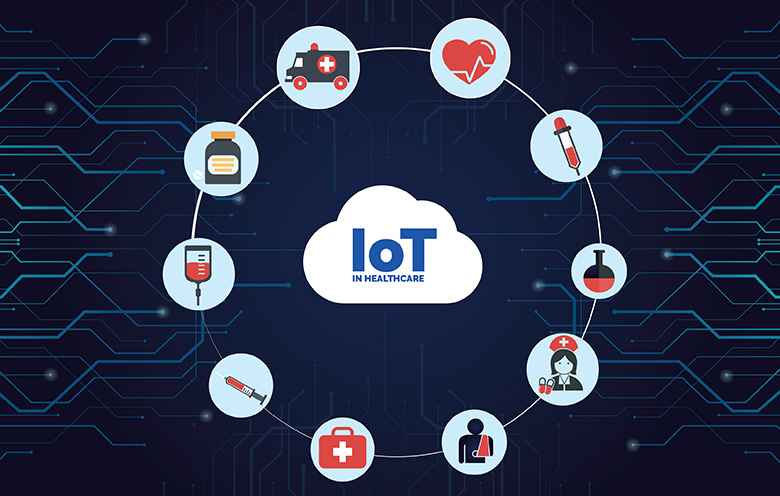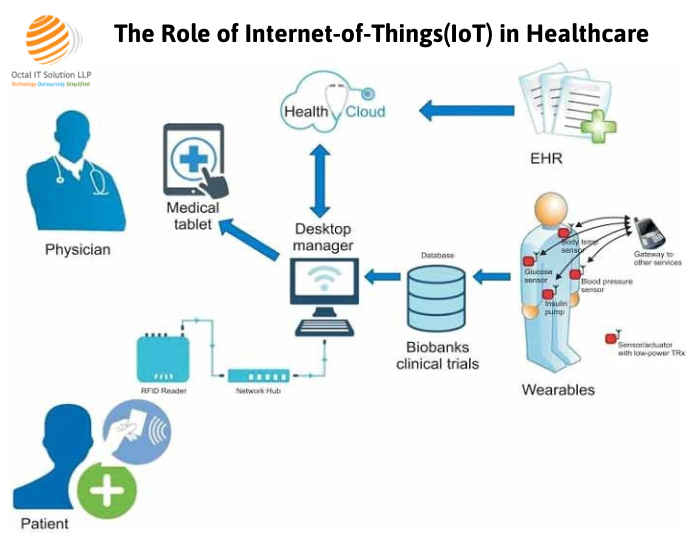The Role of IoT Gadgets in Healthcare and Telemedicine

The integration of IoT in the healthcare industry is revolutionizing the way healthcare is delivered. With IoT, healthcare providers are able to offer real-time patient monitoring, personalization of treatment, and improved patient outcomes. In this post, we will discuss the potential of IoT in the healthcare industry through three case studies.
Case Study 1: IoT in Telemedicine
The first case study that we will discuss is the use of IoT in Telemedicine. Telemedicine has become increasingly popular in recent years as a way to remotely monitor and treat patients. IoT has the potential to further improve telemedicine by providing real-time data about a patient’s health status. This data can be used to personalize treatment plans and ensure the most effective care is being delivered.

Abstract
Telemedicine is a popular and efficient way to manage patients remotely. With the integration of IoT, telemedicine has even more potential to deliver personalized and effective care.
Introduction
IoT has the potential to transform the healthcare industry by enabling real-time patient monitoring, personalization of treatment plans, and improved patient outcomes. Telemedicine is one of the most promising use cases for IoT in healthcare, as it allows for the remote monitoring and treatment of patients. By integrating IoT devices into telemedicine, healthcare providers can access real-time data about a patient’s health and use this data to personalize treatment plans and ensure the most effective care is being delivered.
Content
IoT in telemedicine has several potential use cases. One of the primary use cases is remote patient monitoring. IoT devices can be used to monitor a patient’s vital signs, such as heart rate, blood pressure, and oxygen levels, in real-time. This allows healthcare providers to detect any changes in a patient’s health status and take action immediately. It also allows for more frequent monitoring of patients, which can help catch any problems early on.
Another potential use case for IoT in telemedicine is the personalization of treatment plans. By collecting real-time data about a patient’s health status, healthcare providers can create personalized treatment plans that take into account the patient’s specific needs and conditions. This can lead to more effective treatment and better patient outcomes.
IoT in telemedicine can also improve communication between healthcare providers and patients. IoT devices can be used to send alerts and reminders to patients, ensuring they take their medication on time and follow their treatment plan. This can help improve patient adherence and lead to better treatment outcomes.
Conclusion
IoT has the potential to transform telemedicine by enabling real-time patient monitoring, personalization of treatment plans, and improved communication between patients and healthcare providers. As we move forward, we will likely see more and more healthcare providers using IoT devices in their telemedicine practices.
Case Study 2: IoT-based Healthcare Solution
The second case study we will discuss is the use of an IoT-based healthcare solution. This solution uses IoT devices to monitor patients in hospitals and collect data about their health status. The data is then used to create personalized treatment plans and improve patient outcomes.

Abstract
An IoT-based healthcare solution uses IoT devices to monitor patients and collect data about their health status. This data is used to create personalized treatment plans and improve patient outcomes.
Introduction
IoT has the potential to revolutionize healthcare by providing real-time patient monitoring, personalization of treatment plans, and improved patient outcomes. In this case study, we will discuss an IoT-based healthcare solution that uses IoT devices to monitor patients in hospitals and collect data about their health status. This data is then used to create personalized treatment plans and improve patient outcomes.
Content
The IoT-based healthcare solution involves the use of IoT devices to collect real-time data about a patient’s health status. This data is then sent to a centralized system, where it is analyzed by healthcare providers. The healthcare providers use the data to create personalized treatment plans that take into account the patient’s specific needs and conditions.
The IoT devices used in the solution can monitor a variety of vital signs, including heart rate, blood pressure, and oxygen levels. They can also monitor the patient’s activity levels, such as how much they are walking and how much they are sleeping. This data can be used to detect any changes in the patient’s health status and take action immediately.
The solution also includes a mobile app that patients can use to access their treatment plan and communicate with their healthcare providers. The app can send alerts and reminders to patients, ensuring they take their medication on time and follow their treatment plan.
The IoT-based healthcare solution has several potential benefits. It can improve patient outcomes by providing personalized treatment plans and detecting any changes in a patient’s health status early on. It can also help healthcare providers save time and resources by streamlining the patient monitoring process.
Conclusion
The use of an IoT-based healthcare solution can provide personalized treatment plans and improve patient outcomes. As we move forward, we will likely see more and more healthcare providers adopting this type of solution to improve the quality of care delivered to their patients.
Case Study 3: Opportunities and Limitations of IoT in Healthcare
The final case study we will discuss is the opportunities and limitations of IoT in healthcare. While IoT has the potential to transform healthcare, there are also several challenges that need to be addressed to ensure its success.

Abstract
IoT has the potential to transform healthcare, but there are also several challenges that need to be addressed to ensure its success. This case study will discuss the opportunities and limitations of IoT in healthcare.
Introduction
IoT has the potential to revolutionize healthcare by providing real-time patient monitoring, personalization of treatment plans, and improved patient outcomes. However, there are also several challenges that need to be addressed to ensure its success. In this case study, we will discuss the opportunities and limitations of IoT in healthcare.
Content
One of the primary opportunities of IoT in healthcare is the ability to provide real-time patient monitoring. This can improve patient outcomes by allowing healthcare providers to detect any changes in a patient’s health status and take action immediately. It can also lead to more frequent monitoring of patients, which can help catch any problems early on.
Another opportunity of IoT in healthcare is the personalization of treatment plans. By collecting real-time data about a patient’s health status, healthcare providers can create personalized treatment plans that take into account the patient’s specific needs and conditions. This can lead to more effective treatment and better patient outcomes.
However, there are also several limitations that need to be addressed to ensure the success of IoT in healthcare. One of the primary limitations is the security and privacy of patient data. With IoT devices collecting large amounts of sensitive patient data, it is important to ensure that this data is kept secure and private. Healthcare providers need to have robust security measures in place to protect patient data from cyberattacks.
Another limitation is the interoperability of IoT devices. With a wide range of IoT devices being used in healthcare, it can be difficult to ensure that they all work together seamlessly. Healthcare providers need to ensure that their IoT devices are interoperable and can communicate with each other to provide accurate real-time data.
Conclusion
IoT has the potential to revolutionize healthcare by providing real-time patient monitoring, personalization of treatment plans, and improved patient outcomes. However, there are also several challenges that need to be addressed to ensure the success of IoT in healthcare. Healthcare providers need to ensure the security and privacy of patient data, and ensure that their IoT devices are interoperable and can communicate with each other to provide accurate real-time data.
In conclusion, the integration of IoT in the healthcare industry has the potential to transform the way care is delivered to patients. By providing real-time patient monitoring, personalization of treatment plans, and improved patient outcomes, IoT is revolutionizing the healthcare industry. However, healthcare providers need to address the challenges of security and privacy of patient data, and ensure that their IoT devices are interoperable, to ensure the success of IoT in healthcare.

Source image : www.softwebsolutions.com

Source image : www.octalsoftware.com.sg

Source image : mobisoftinfotech.com





